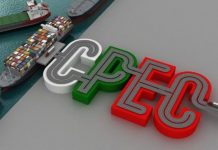Developmental projects are backbone of an economy. Therefore, developing countries around the world are in need of such projects that enhance their regional and international connectivity, create employment opportunities and consequently improve their living standards. The concept of economic corridor was first introduced at the GMS (Greater
Mekong Sub region) Eighth Ministerial Meeting in 1998 (Ishida, 2009). The basic idea behind economic corridors is to facilitate economic activity through accumulation of industrial estates on the borders and coastal areas and construction of oil refineries and natural gas pipelines. Additionally, the aim is to enhance tourism as well as achieve access to regional and international markets to boost trade. An important characteristic of most development projects are the Special Economic Zones (SEZs). The SEZs are the specific geographical region with less economic regulations than a country’s usual regulation laws. SEZs consist of Export Processing Zone (EPZ) or Free Trade Zone (FTZ) and therefore get special tax exemptions. SEZs have become a leading promoter for regional economic growth and development in countries like ASEAN and China (Ishida, 2009). One of the main stimulating factors for the establishment of SEZs is when a country decides to increase regional trade through economic corridors (De and Iyengar, 2014).
Muhammad Nasir, Phd
Senior Research Economist, PIDE
Abdul Wadood Kakar
PIDE
CoE-CPEC
Reviewed by:
Muhammad Muzammil Zia, CoE-CPEC
Shujaa Waqar, CoE-CPEC

 中文
中文 Urdu
Urdu












